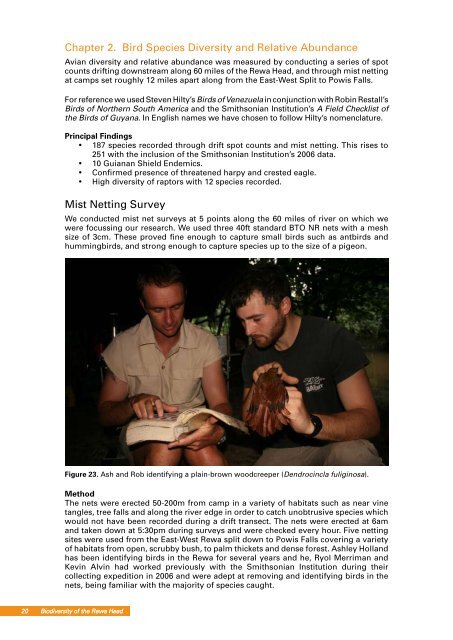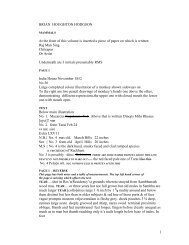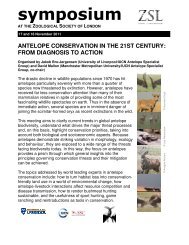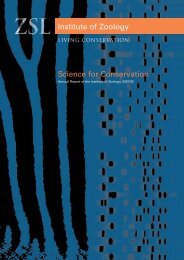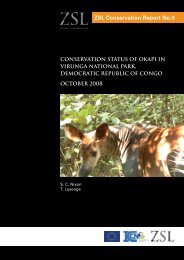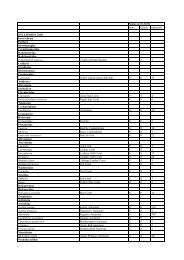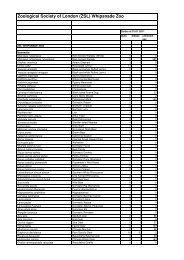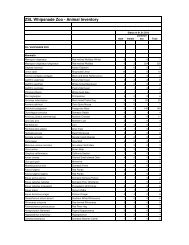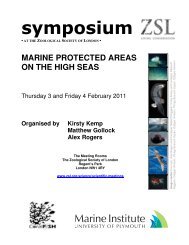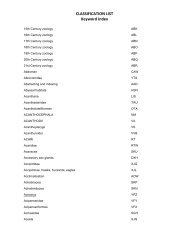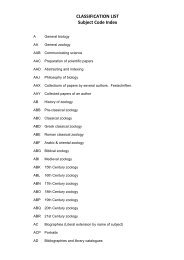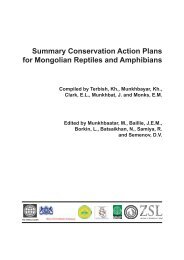Biodiversity of the Rewa Head B Zoological Society of London ...
Biodiversity of the Rewa Head B Zoological Society of London ...
Biodiversity of the Rewa Head B Zoological Society of London ...
Create successful ePaper yourself
Turn your PDF publications into a flip-book with our unique Google optimized e-Paper software.
Chapter 2. Bird Species Diversity and Relative Abundance<br />
Avian diversity and relative abundance was measured by conducting a series <strong>of</strong> spot<br />
counts drifting downstream along 60 miles <strong>of</strong> <strong>the</strong> <strong>Rewa</strong> <strong>Head</strong>, and through mist netting<br />
at camps set roughly 12 miles apart along from <strong>the</strong> East-West Split to Powis Falls.<br />
For reference we used Steven Hilty’s Birds <strong>of</strong> Venezuela in conjunction with Robin Restall’s<br />
Birds <strong>of</strong> Nor<strong>the</strong>rn South America and <strong>the</strong> Smithsonian Institution’s A Field Checklist <strong>of</strong><br />
<strong>the</strong> Birds <strong>of</strong> Guyana. In English names we have chosen to follow Hilty’s nomenclature.<br />
Principal Findings<br />
• 187 species recorded through drift spot counts and mist netting. This rises to<br />
251 with <strong>the</strong> inclusion <strong>of</strong> <strong>the</strong> Smithsonian Institution’s 2006 data.<br />
• 10 Guianan Shield Endemics.<br />
• Confirmed presence <strong>of</strong> threatened harpy and crested eagle.<br />
• High diversity <strong>of</strong> raptors with 12 species recorded.<br />
Mist Netting Survey<br />
We conducted mist net surveys at 5 points along <strong>the</strong> 60 miles <strong>of</strong> river on which we<br />
were focussing our research. We used three 40ft standard BTO NR nets with a mesh<br />
size <strong>of</strong> 3cm. These proved fine enough to capture small birds such as antbirds and<br />
hummingbirds, and strong enough to capture species up to <strong>the</strong> size <strong>of</strong> a pigeon.<br />
Figure 23. Ash and Rob identifying a plain-brown woodcreeper (Dendrocincla fuliginosa).<br />
Method<br />
The nets were erected 50-200m from camp in a variety <strong>of</strong> habitats such as near vine<br />
tangles, tree falls and along <strong>the</strong> river edge in order to catch unobtrusive species which<br />
would not have been recorded during a drift transect. The nets were erected at 6am<br />
and taken down at 5:30pm during surveys and were checked every hour. Five netting<br />
sites were used from <strong>the</strong> East-West <strong>Rewa</strong> split down to Powis Falls covering a variety<br />
<strong>of</strong> habitats from open, scrubby bush, to palm thickets and dense forest. Ashley Holland<br />
has been identifying birds in <strong>the</strong> <strong>Rewa</strong> for several years and he, Ryol Merriman and<br />
Kevin Alvin had worked previously with <strong>the</strong> Smithsonian Institution during <strong>the</strong>ir<br />
collecting expedition in 2006 and were adept at removing and identifying birds in <strong>the</strong><br />
nets, being familiar with <strong>the</strong> majority <strong>of</strong> species caught.<br />
20 <strong>Biodiversity</strong> <strong>of</strong> <strong>the</strong> <strong>Rewa</strong> <strong>Head</strong>


